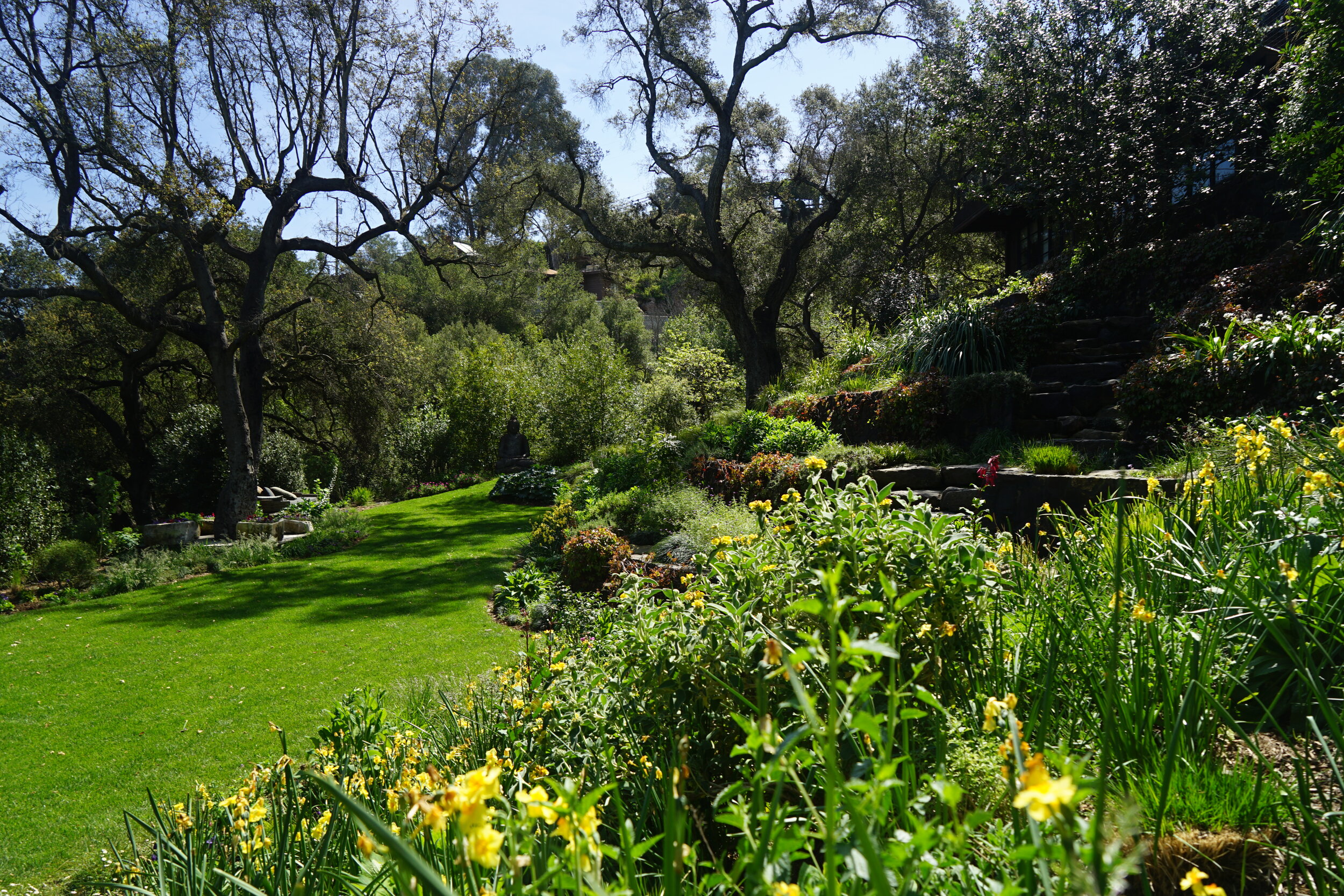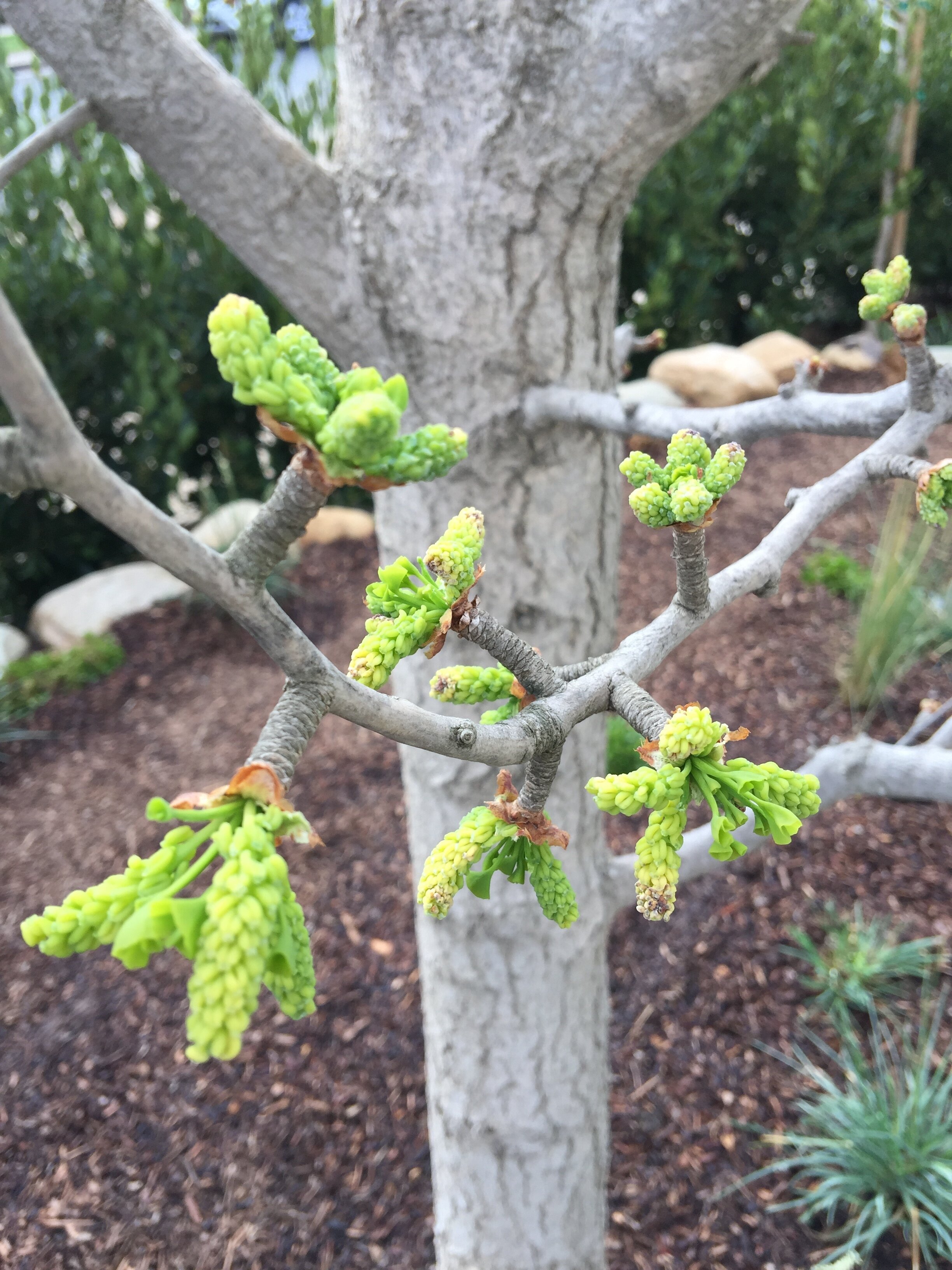Well, it’s spring. At least, the plants think so, even if your calendar is not quite ready. And, as we’ve noted before, while I am not particularly knowledgeable about horticulture, my field-oriented colleagues are very proudly plant nerds. So as the canyon starts to burst with life and flowers, I thought that I’d sit down with some of them and talk about the things that really make their heads explode.
The rain is low again this year, and though we have not yet been officially declared in drought, this seems like only a matter of time, despite this week’s rain. Worldwide, this year was the hottest January ever measured. The result for the plants is that their seasonal triggers are thrown into confusion, with daytime high temperatures almost forty degrees higher than the nighttime lows, which still get down to nearly freezing.
Horticulturalists do not believe that the early blooming triggered by these warm spells pose an existential risk to flowering plants, however, they won’t likely bloom again in the real spring, meaning that the main damage will be to the productivity of farms and orchards that depend on the fruit that develops from those spring flowers. The plants themselves should function normally, so long as next winter fits a more normal pattern, even if it should happen to be severe. The real risk to the health of the plants is the possibility that an overnight freeze will damage the budding leaves they are sending out early.
My colleagues talk about the stages of spring in color codes: the native daffodils of the ‘yellow garden’ are in their annual bloom at the most elaborate garden we nurture, and later in the season, the oranges, the whites and the reds will come out. The purples are out in some places right now, as anyone with a fear of bees will no doubt have noticed. We’ll get to that later…
Ceanothus – There are two types of Ceanothus that are native to Topanga Canyon, both of which we’ve posted about on this blog in past years. Their names are Ceanothus thyrsiflorus and Ceanothus crassifolius, and they normally bloom in succession, one right after the other. Due to the confusion of temperature this year, however, Richard has noticed that both species are in bloom together this year, side by side. Ceanothus are unusual in that they add nitrogen to the soil rather than using it up, increasing the nutrients available to other plants in your garden. The hue of the flowers, which open in bunches or sprays made up of hundreds of tiny flowers, vary in a spectrum running from deep blue to light blue, white, pink and lighter shades of purple. The type pictured above is called Ceanothus arboreus ‘Cliff Schmidt,’ named after a CSU San Jose botanist who wrote the ceanothus sections of the well known Jepson Manual and later the Flora of North America. It was first selected and developed from Santa Cruz Island off the Southern California coast by David Fross, founder of a nursery called Native Sons. Cliff Schmidt, also called Feltleaf Ceanothus, grows in a compact, upright ‘habit,’ with larger leaves and flowers of a deeper blue than other common varieties.
Manzanitas – I know Manzanitas as the stiff-limbed, stabby plants with the pretty, red, peeling bark that are so hard to avoid when you are trying to move quickly while hiking. My colleagues know them as a drought tolerant native species that come in a wide variety of shapes and sizes, making them versatile ornamentals in the gardens we design. Manzanitas, too, have been observed in flower lately, their tiny, sparse pink or white blossoms contrasting sharply with the deep red of their bark and the bright green of their leaves.
Yellow Garden – Our model garden on Parkway Trail is full of yellow flowers at the moment, which my colleagues communicate to one another with the shorthand ‘Yellow Garden.’ I had to ask for clarification, but apparently this refers to the same patch of ground as the label ‘Red Garden’ will, later in the season, only different plants will be flowering. Diverse gardens like these are a great way to keep your landscaping feeling fresh, year after year, and a great way to support native bee varieties, many of which are especially active for a limited period in the spring.
Rosemary – Rosemary is an important bee-supporting plant species that grows well in the local climate (and adds distinctive flavor to your meals!). That familiar, heavy fragrance travels well, and bees are often seen working busily about the many tiny purple flowers it produces. Often hundreds of bees are to be seen—not swarming, that is a different behavior—but thronging these low, ground-covering shrubs at this time of year.
Ginkgos – Ginkgo budding is one of Richard’s markers for the next stage of spring, triggered not by temperature but by photoperiod, which is to say, ‘when the days get long enough.’ Ginkgo are a favorite of arborists and landscapers of all climate zones, but my memory of them is dominated by the (rather unappealing) greasy fruit that female ginkgo trees used to drop all over the ground and (more to the point) the sidewalks across campus at Penn State University, my undergraduate alma mater. This is an experience almost nobody on the West Coast will share, because in recent years it has become pro forma to destroy female trees and only plant the males. The habit is so pervasive that even when Richard tagged three females at a nursery some years back, the nursery workers simply assumed he’d done so by mistake. We were redesigning the gardens at a predominantly Japanese nursing home and Richard knows that Issei (first-generation Japanese Americans) will happily pick and eat ginkgo fruit. The nursery employees, however, had never known any customer to knowingly buy female ginkgo. Without calling Richard to ask, they simply tore off his tags and destroyed the trees as they usually would.










